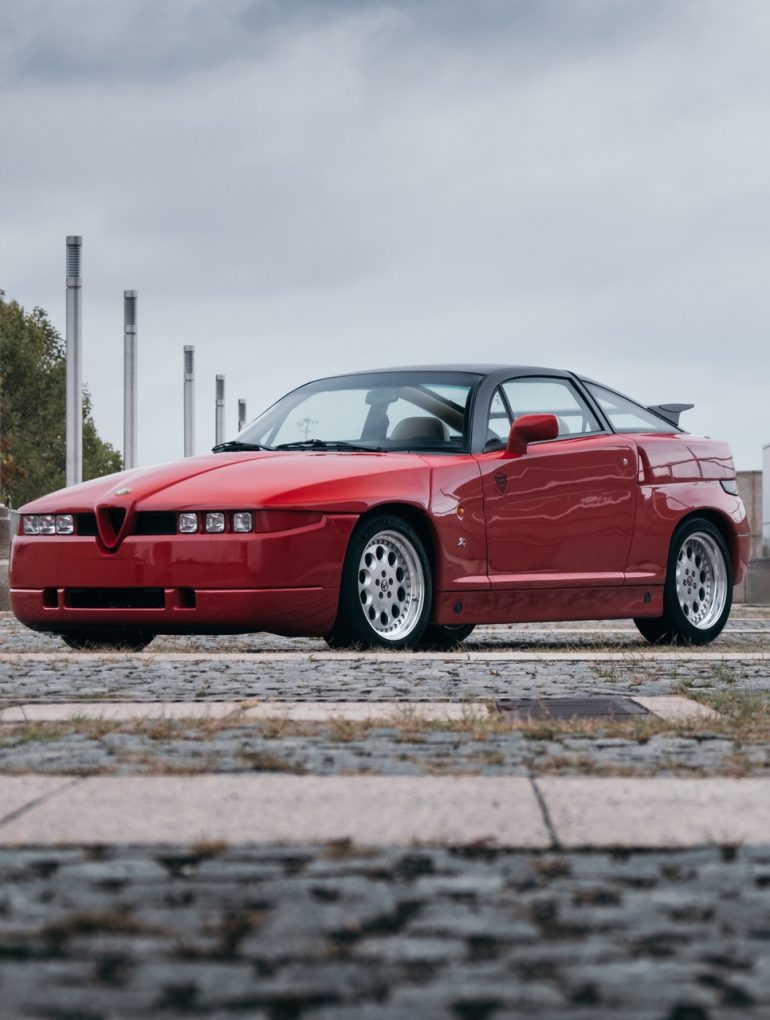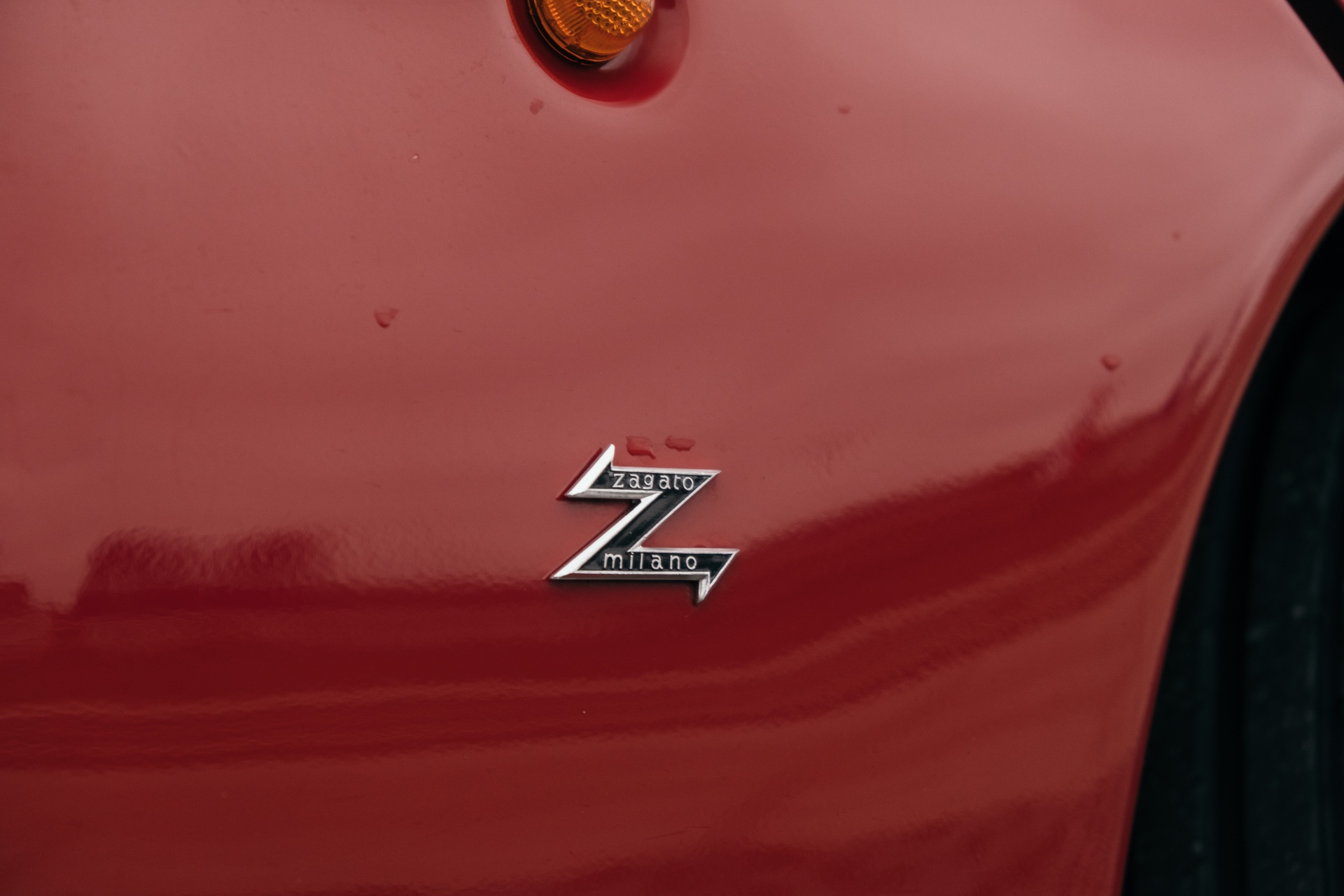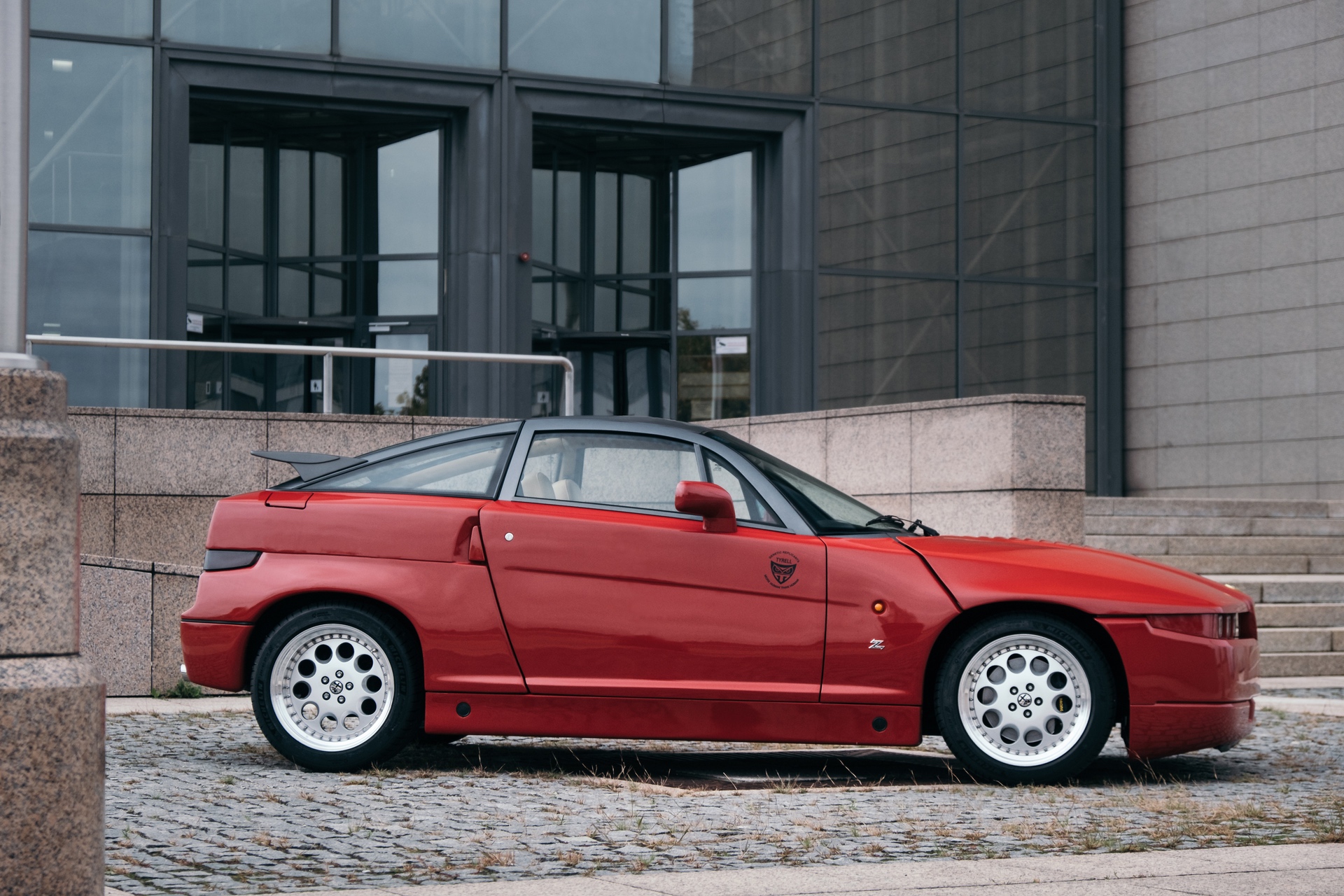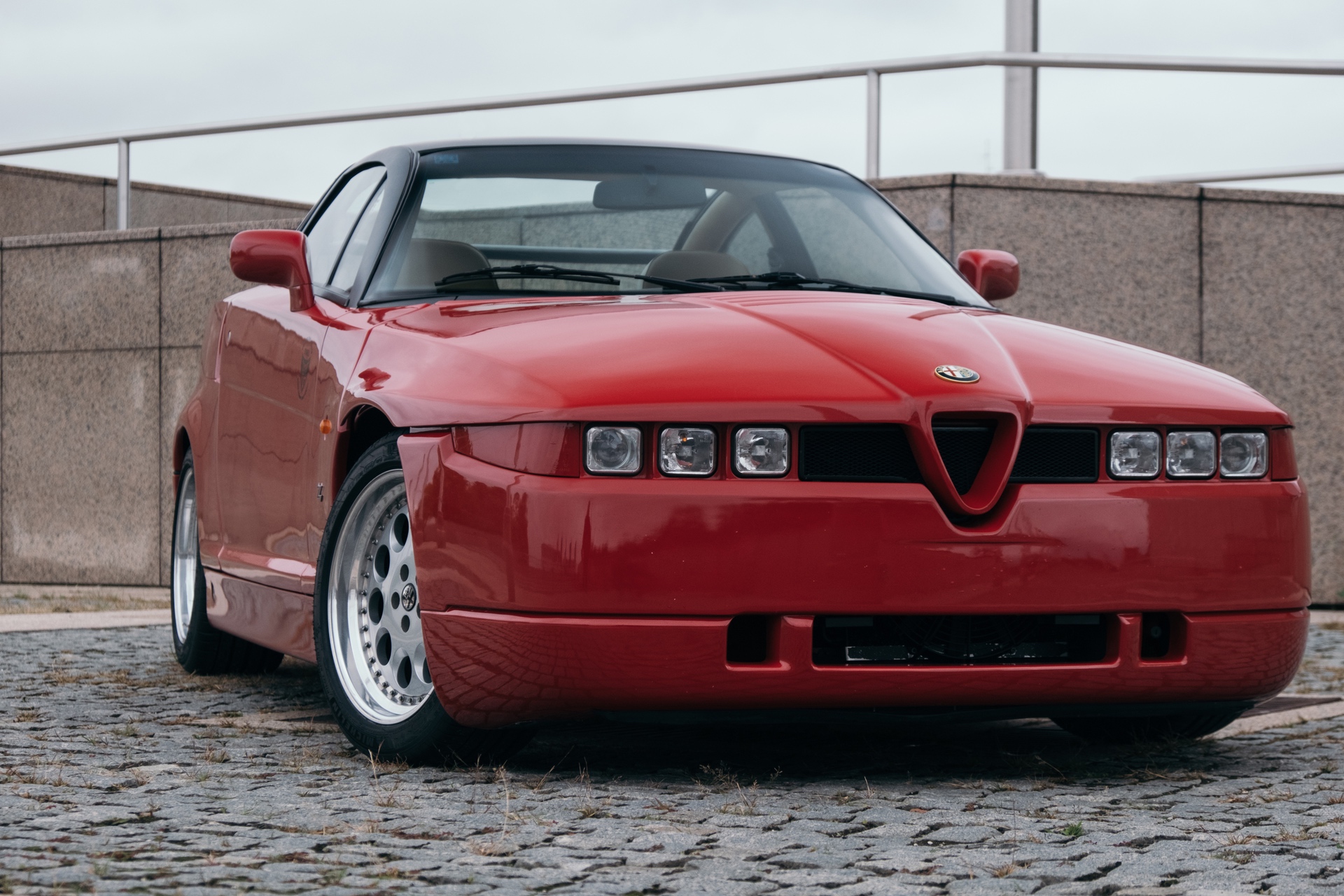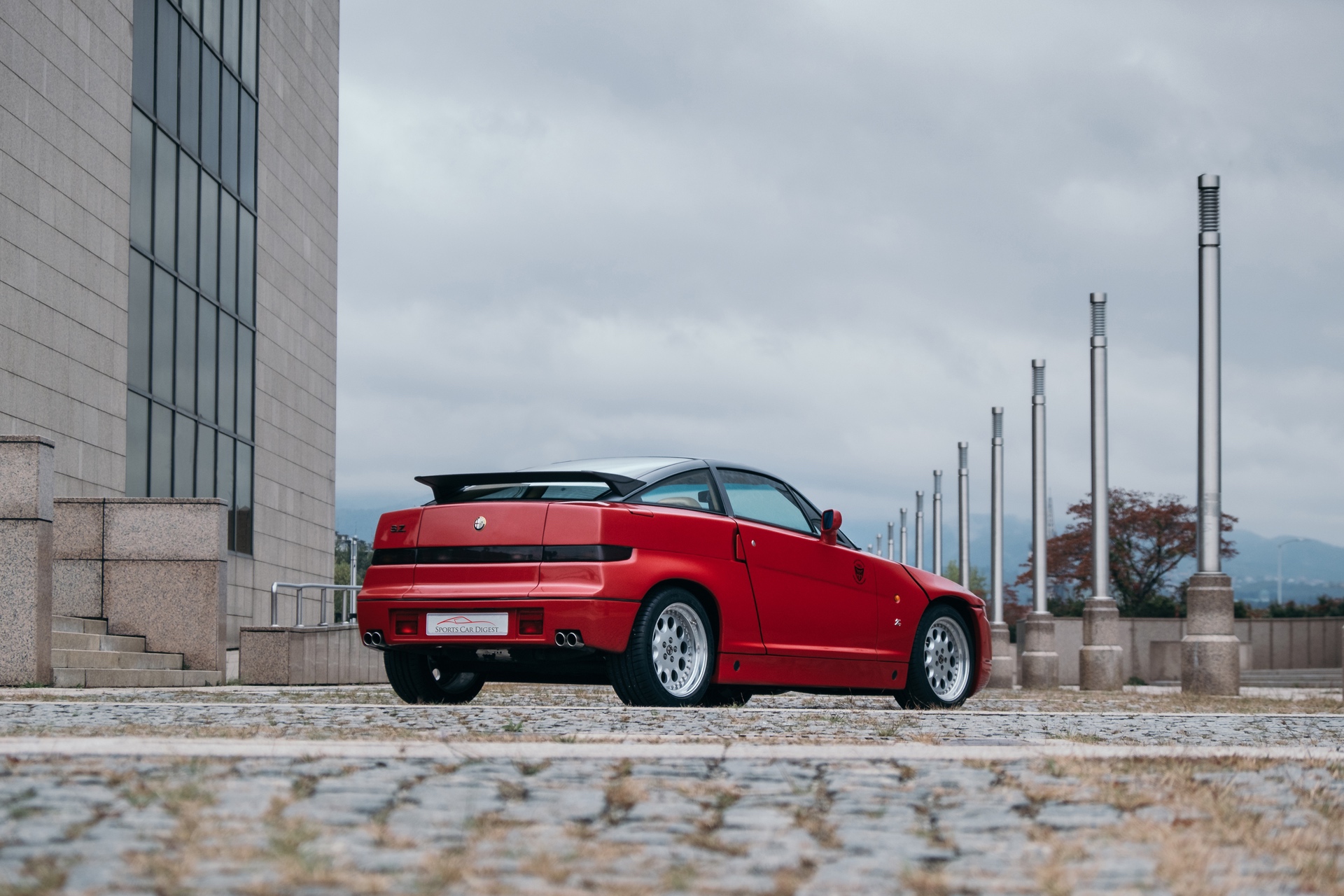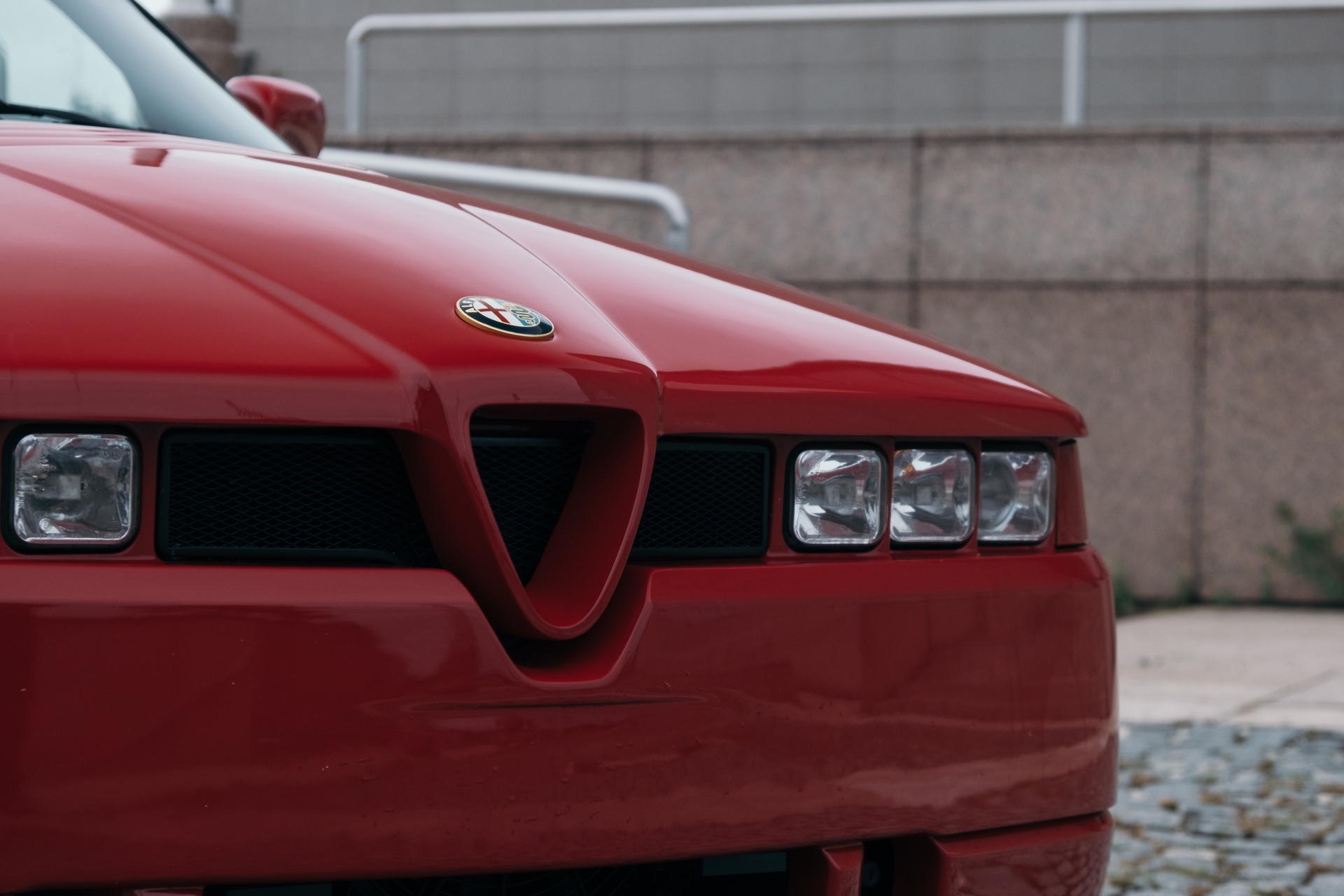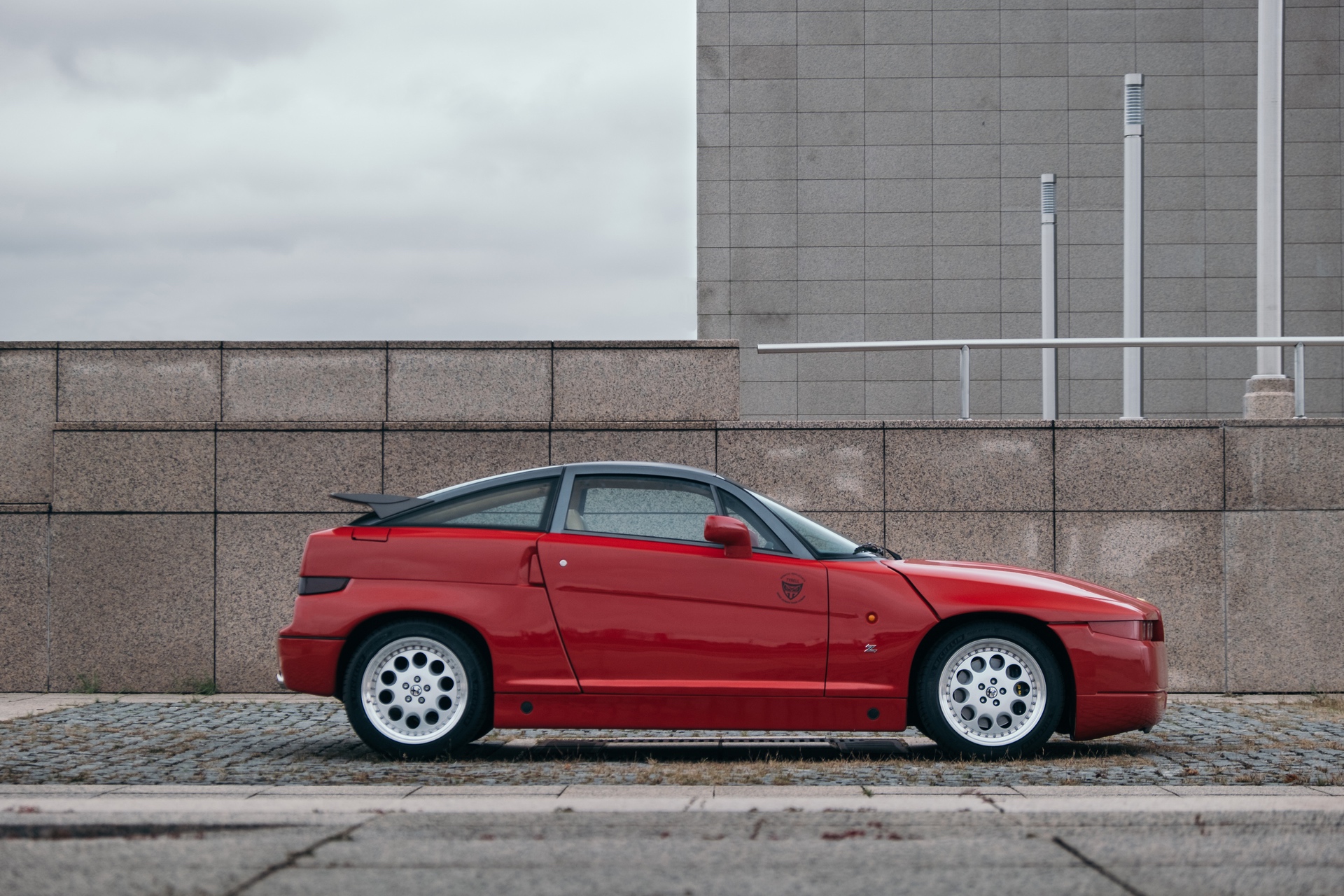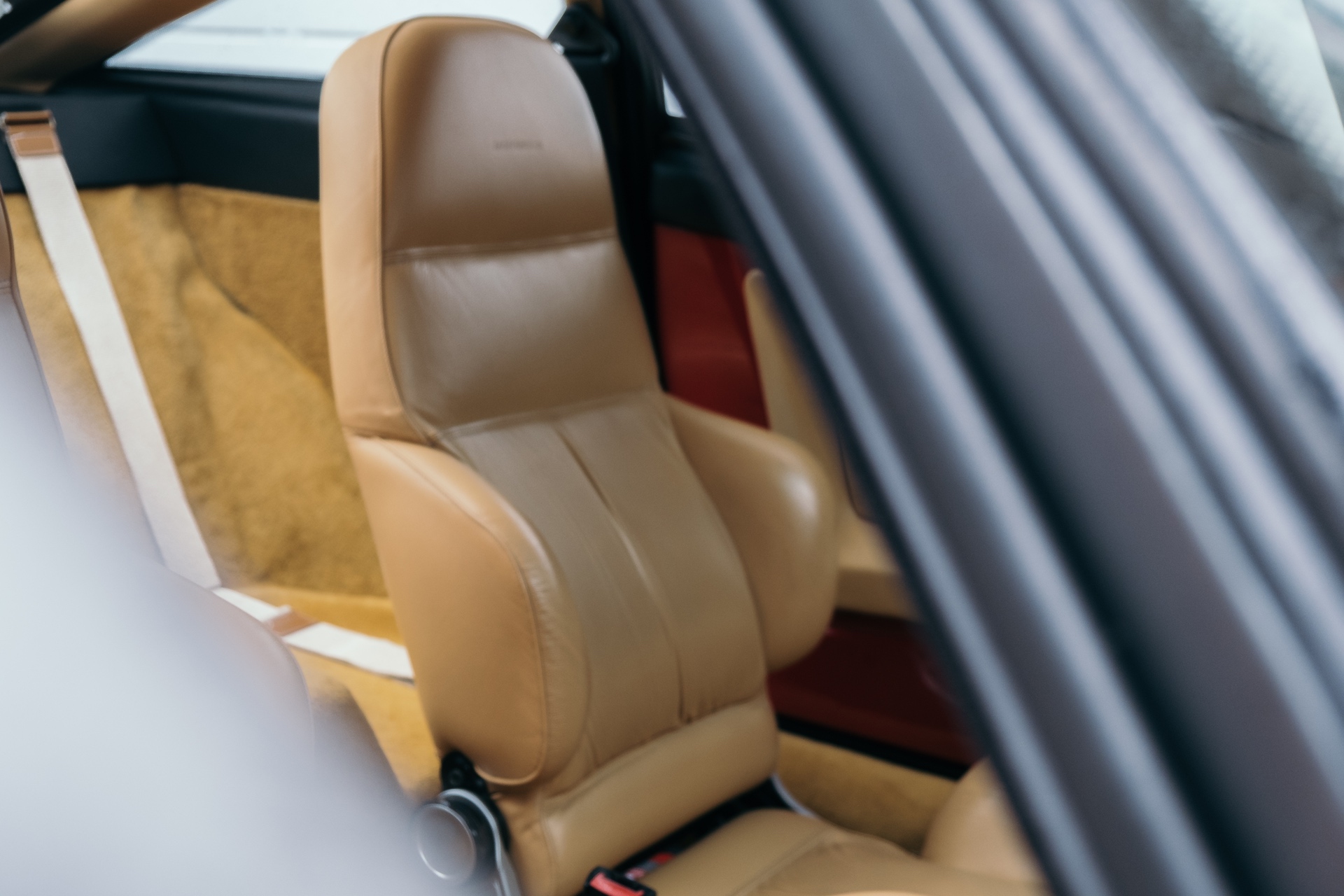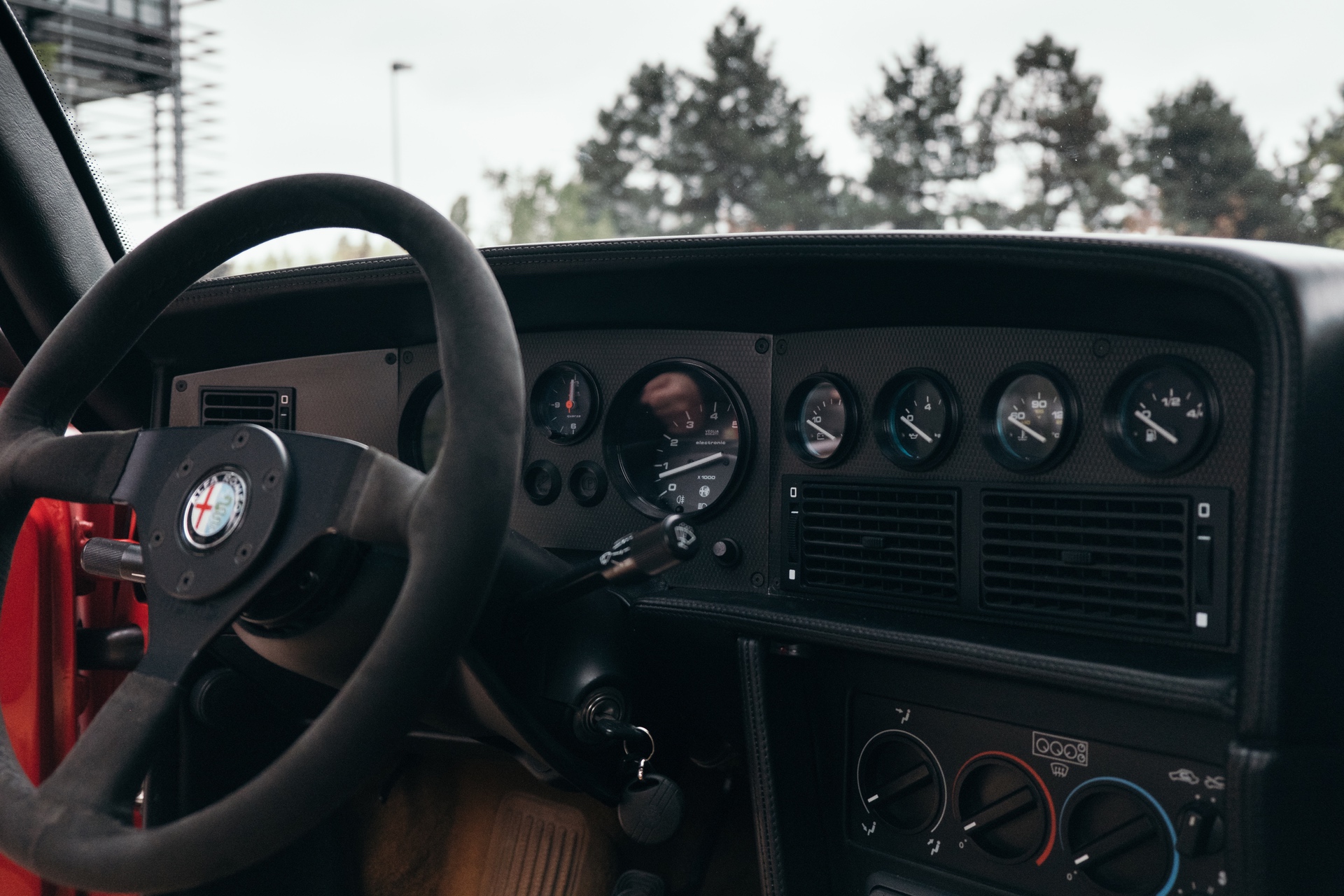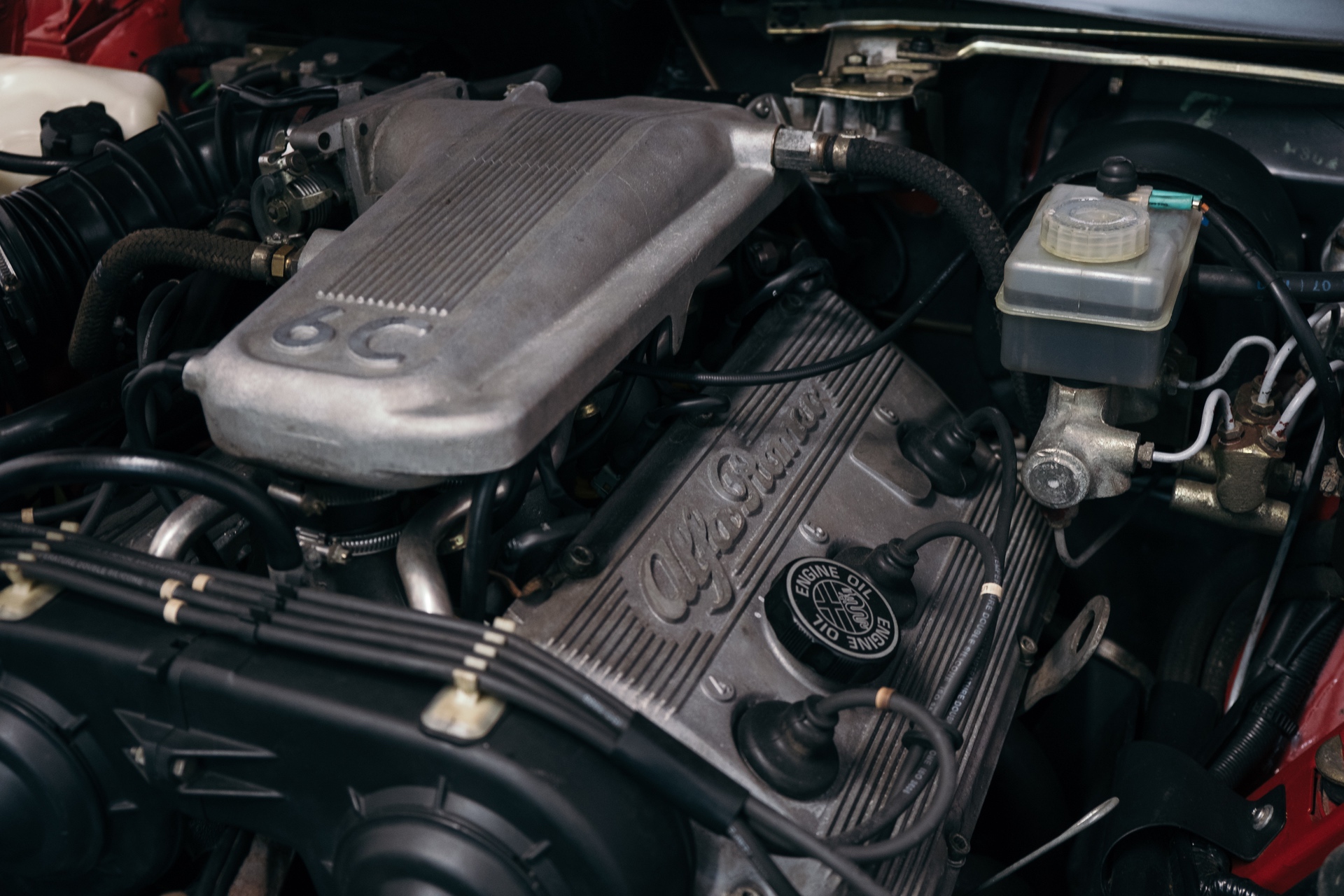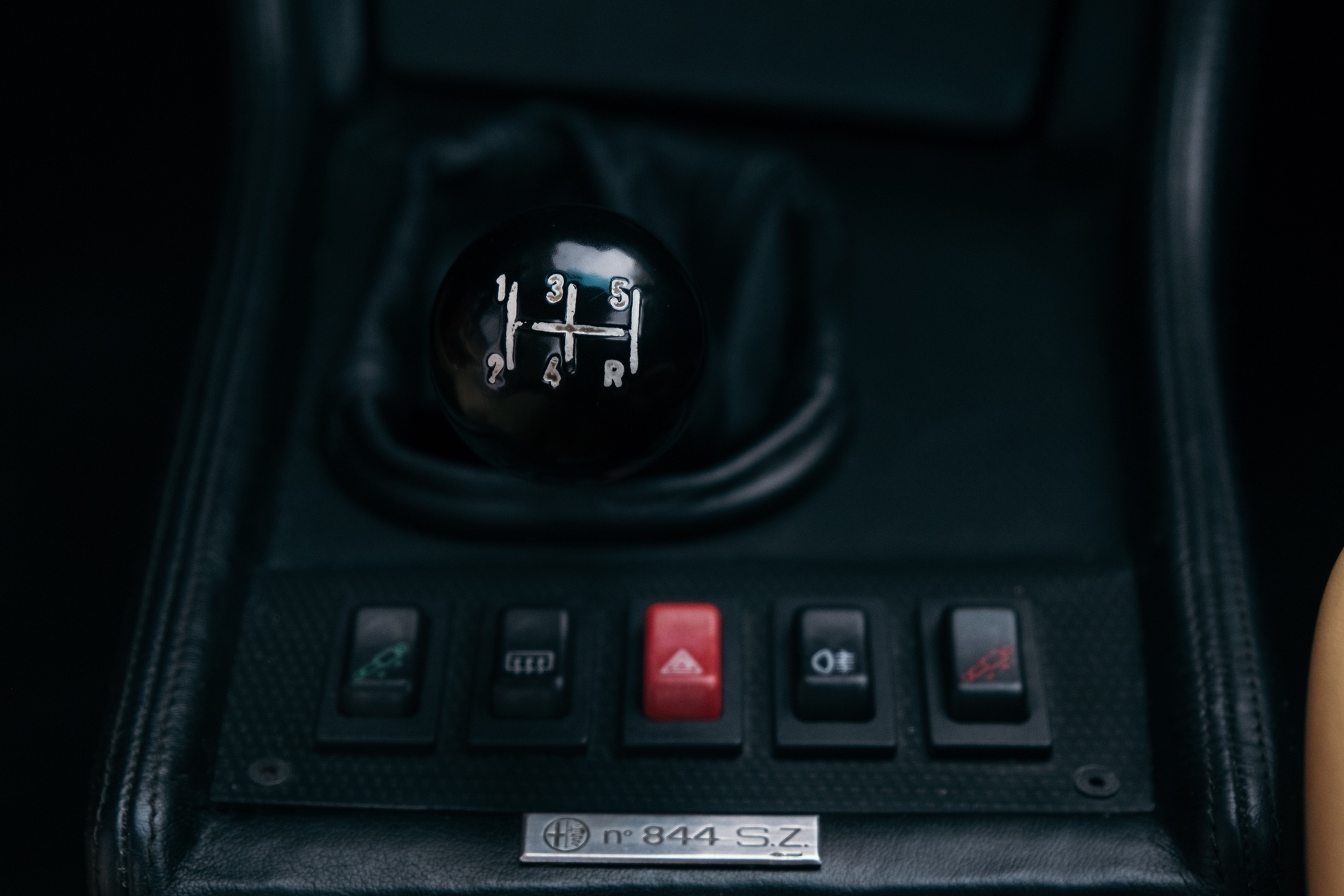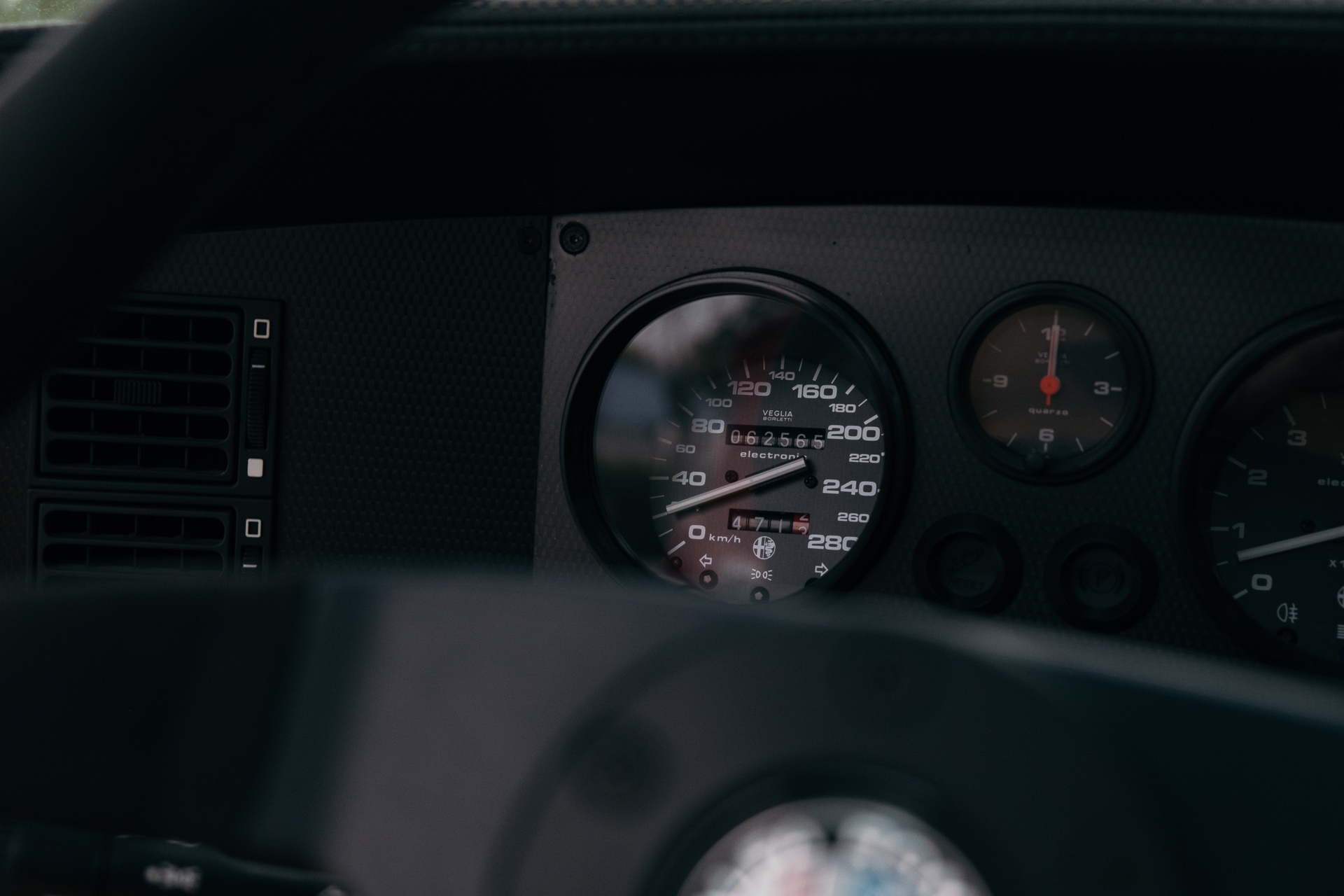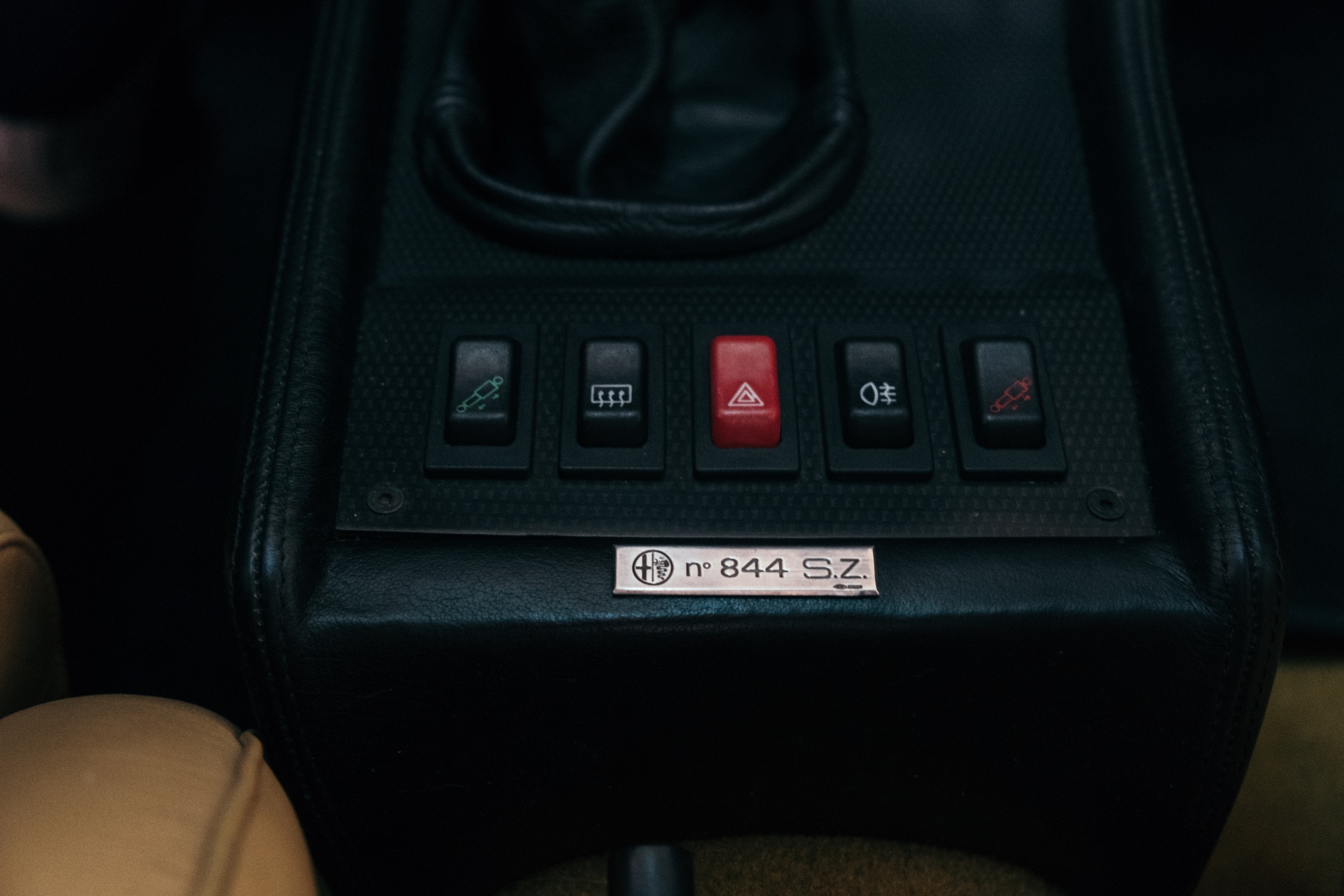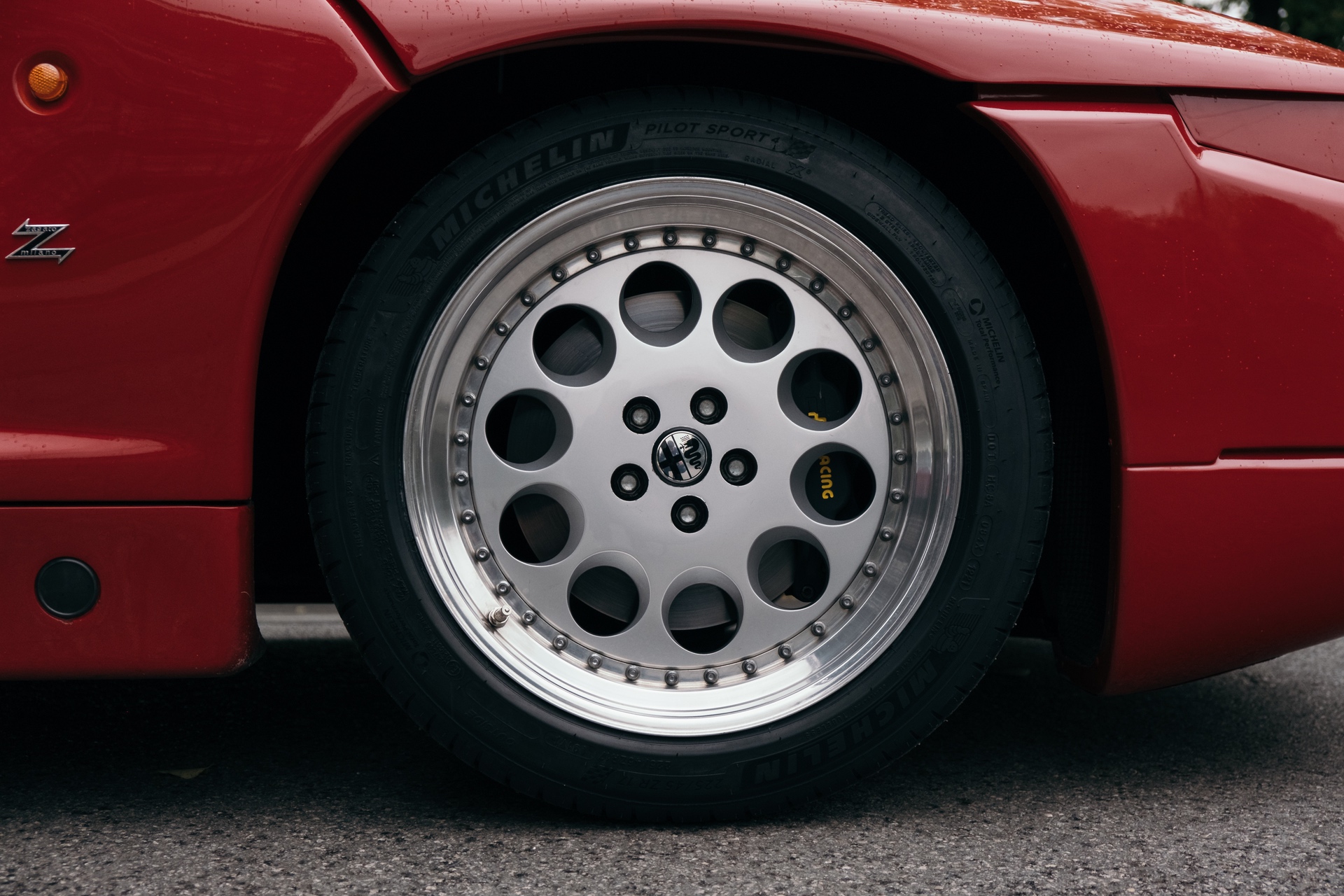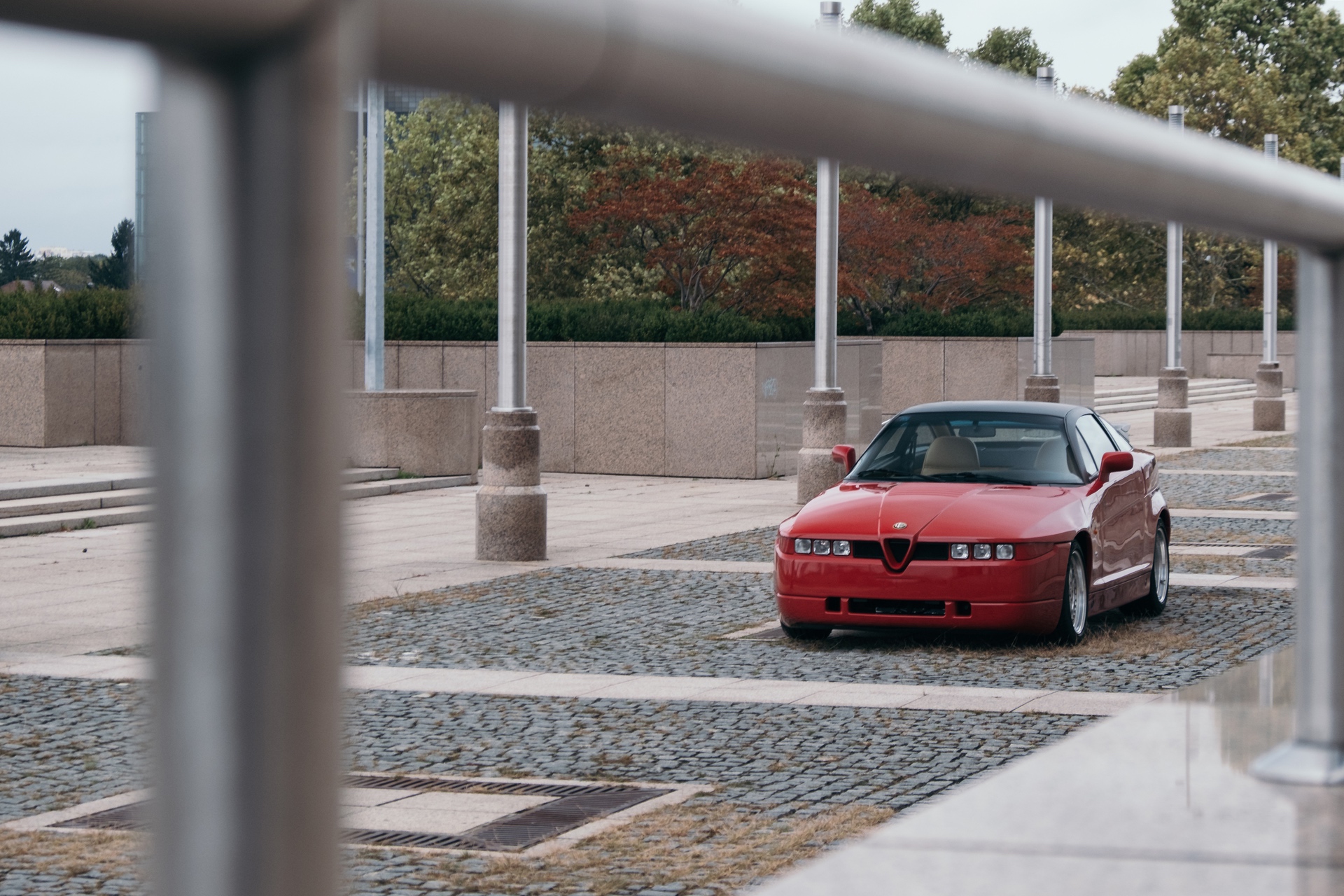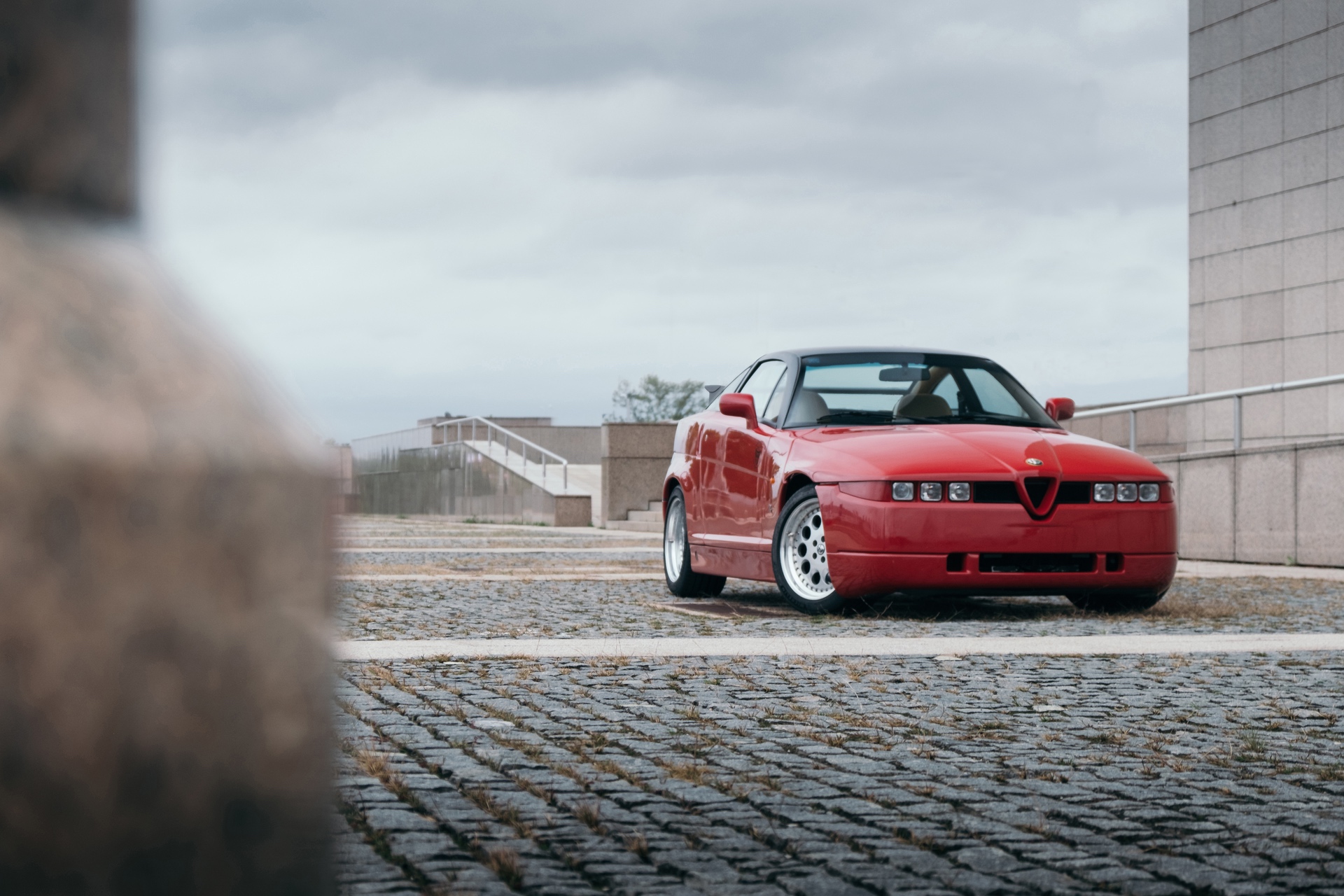Let’s face it, the Alfa Romeo SZ will most likely trigger a fight or flight reaction. A car with such peculiar looks isn’t innately beautiful; it’s an acquired taste. But once you learn how to observe the SZ and look past its menacing demeanor, this special Alfa will uncover an unimaginable palette of flavors only a car from an Italian carrozzeria workshop can offer.
Its otherworldly appearance might have earned it the name Il Mostro, but having been created and honed by some of the most revered names in the industry over just 19 months, the Alfa Romeo SZ pressed all the right buttons for an exceptional sports car.
There are more than a few reasons why this special Alfa Romeo is finally getting some much deserved recognition from the wider public, so let’s dig into its origins to see how the most infamous Alfa Romeo ever became an unlikely hero.
History and Development of the Alfa Romeo SZ
From the people’s carmaker Fiat to the great Ferrari, collaborations between car manufacturers and coachbuilders have always been commonplace in the Italian automotive industry. Most famously, these artisans have been creating unique pieces out of existing mechanics for automotive shows or special clients, but they more often provided design, consulting and manufacturing services for low volume production cars.
One of those creative houses was Zagato, long known for its trademark double-bubble roofline, which it never abandoned once from the razor sharp 1970s all the way to the 1990s. In addition to turning radical ideas into existing forms, Zagato also researched technologically advanced materials like glass fiber composites.
To understand how a radical creation like the SZ came to be, we need to go back to 1986, when Alfa Romeo became a part of Fiat. Beforehand, the Milanese company was highly regarded for building exclusive sports and race cars, successfully campaigning them in numerous racing series worldwide. Still, the company faced troubles after the late 1960s, and unfavorable economic circumstances throughout the automotive world during the 1970s left an even bigger toll, forcing Fiat to adapt in order to survive.
By the time Fiat bought Alfa Romeo, the Milanese manufacturer had already tried turning to more affordable front-wheel drive models and mass production. Unfortunately, these moves didn’t always yield results—for example, there was the forgettable Alfasud and the Arna, an unholy alliance between Nissan and Alfa Romeo.
In the process, Alfa Romeo gave up on exclusivity and its image of a bona fide sports car maker, struggling to keep the flame alive through sports cars like the Alfetta GT/GTV and Tipo 33 racing machinery.
After the 1986 merger, Fiat had to assure the public and the connoisseurs that Alfa Romeo could thrive under their new ownership. So to build the SZ, Fiat’s leadership commissioned Alfa Romeo Centro Stile, Zagato, and its own in-house team, the Fiat Centro Stile to pitch the messenger of Alfa Romeo’s redemption.
In the end, it was the Fiat Centro Stile which penned the design, whereas Zagato was kept as an outside contractor for its composite material know-how and a historic bond with special Alfa Romeo cars.
The prototype broke cover at the 1987 Geneva Auto Show as the Alfa Romeo ES-30 (which stood for Experimental Sportscar 3.0-liter). It was built around the Alfa Romeo 75’s underpinnings.
Both the name and the shape suggested it would just be an engineering and design study, but in 1989, Geneva saw a production variant virtually identical to the 1987 show car, destined for a limited run of 1000 examples. The car was named simply SZ, harking back to the Sprint Zagato and Sport Zagato cars from Alfa’s glory days.
Its price tag was an equivalent of $55,335 in 1989 money—less than the contemporary Ferrari Testarossa, but more than a baseline Porsche 911, and it never sold in the US. In spite of the SZ’s hefty price tag and divisive looks, all 1036 cars sold from 1989 to 1991.
In addition to that, Zagato built a roadster variant of the same car, named the RZ. But unlike its hardtop counterpart, the topless Zagato didn’t meet its production goal, selling only 278 out of 350 planned examples.
Though the automotive public was favorable to the ES-30, it was quick to bash the SZ as a production car, but the Il Mostro (as it was soon called) was never intended to be embraced by the masses. Debatable looks were no issue for those who wanted what Alfa Romeo was best at providing—a sublime driving experience.
So, what was the recipe that made the Alfa Romeo SZ one of the greatest driver’s cars in recent history? And is its styling actually one of the purest expressions of the era’s zeitgeist?
Chassis, Body, & Interior of the Alfa Romeo SZ
In constructing the SZ, Zagato provided Alfa Romeo with its novel production methods, assisting in development of the body and providing final assembly at Terrazzano di Rho. Just like the ES-30, the SZ was built on a steel chassis, sharing its wheelbase with the 75 sedan, with glass fiber composite-reinforced resin body panels glued onto it.
The body panels were produced by two companies, French Stratime and Italian Carplast. Keeping the center of gravity low, the roof panels were aluminum and the rear spoiler was constructed in carbon fiber.
The construction wasn’t particularly weight-efficient, with the SZ tipping the scales at 2777 lb—around 20lb heavier than the Milano—but the adhesive-bonded panels provided exceptional rigidity, playing a major role in the car’s all-around performance.
The SZ’s zesty body put function over form, dividing the automotive public. While the majority wondered how Alfa Romeo could produce a car so far away from its usual beautiful forms, some thought its nonconformist character was just what the industry needed.
With six square-shaped headlights, the front end somehow conformed to conventional beauty standards, whereas the rest of the car steered into the radical. The high and ascending shoulder line contrasted with tiny side windows, the curved front windshield just emphasized the car’s unusual character, and the boxy tail end abruptly cut right behind the rear wheels to give the SZ an imposing presence from the back.
There was a common misconception that the SZ’s body was designed by Zagato, but in fact it was brought to life by Robert Opron and Antonio Castellana—Opron’s assistant, who polished the initial sketches, penning the final CAD-assisted design both for the ES-30 concept and the subsequent production car.
A brilliant designer who sadly left us in 2021, Robert Opron was best known for work in his native France, where he famously worked for Citroën and Renault. However, he also served as one of Centro Stile Fiat’s head designers from 1985 to 1992.
Throughout his career, the creative Frenchman was no stranger to unorthodox yet ultimately lovable forms. His portfolio included the likes of the Citroën SM and Alpine A310. Now that we’re able to observe the SZ from a less-biased perspective, we can agree that it is not only a milestone in Opron’s extensive career, but in the whole design world as well.
When put in a wider context, the SZ becomes an object of art, transcending the automotive plane. In the 1980s, Italian postmodernism reached its pinnacle and broke through into the mainstream, pushing tedious classical beauty out of the spotlight in favor of the avant-garde.
Ettore Sottsass and his Memphis Group challenged every possible aesthetic norm with their colorful childlike designs—and so did Aldo Rossi with his subdued, yet equally influential art, architecture and household objects. This epoch provides essential context for the SZ.
Comparing the SZ with something like Rossi’s 1989 Parigi armchair, with its curved black armrests and vivid red seating section, one can’t help but put Opron’s most disputed design right where it should be: high among the purest postmodernist designs coming from 1980s Italy.
Officially, the SZ was exclusively finished in Alfa Romeo’s trademark 130 Rosso Alfa with a matte grey roof—save for one all-black example built for Andrea Zagato. Still, as it usually goes with carrozzerias, some clients managed to specify their cars otherwise. Some sources claim that at least one car had a red roof, while two Japanese exports reportedly left the factory in yellow.
The interior blended race car aesthetics with splashes of luxury embodied in tan Zagato-designed monolithic leather-clad seats, door cards and matching soft carpeting. On the other hand, a sportier theme was reflected on the driver-oriented Fablon dashboard and a simple leather-wrapped three-spoke Momo V36 steering wheel specifically designed for this car.
Given that the trunk could fit only a spare tire and a basic toolbox, the storage space was limited to just the shelf behind the leather clad seats. The idea of fitted luggage—which was displayed on the Geneva show version—was abandoned, leaving the section behind the seats empty and prompting owners to find their own solutions.
The owner of this particular Alfa Romeo SZ took matters into his own hands, producing a fitted luggage set inspired by the Geneva auto show prototype set.
**Note: The photographed example (No° 844) has red turn signals inspired by one of pre-production design proposals, a stainless steel exhaust with two double exhaust tips, an Alcantara-wrapped steering wheel, a leather-wrapped handbrake and gear shifter cover, and a ball-shaped gear shifter knob.
Engine & Transmission of the Alfa Romeo SZ
The Alfa Romeo SZ’s powertrain was a proven combination of a longitudinally mounted engine and a transaxle, a layout that could be traced way back to the pre-turned-post-WW2 Alfetta Grand Prix racer, the Alfetta sedan, the GTV coupé, and (finally) the Milano/75.
Inside the SZ, the 60° all-alloy 3.0-liter Busso V6 in SOHC 12-valve configuration was paired with Motronic ML 4.1 multipoint direct fuel injection.
Alfa Romeo’s racing division (Alfa Corse) uprated it to 210 horsepower at 6,200 RPM and 181 lb-ft of torque at 4,500 RPM by installing a more aggressive camshaft, new intake and exhaust manifolds, a larger air filter, and more effective engine oil cooling. The photographed example has its output upped to 235 hp and a 167 MPH top speed.
The transaxle was a 5-speed unit with a conventional shift pattern and a 25% self locking differential, and it gave the car an ideal weight distribution of 50:50. The engine and the gearbox were mated via a hydraulic single plate clutch, which was reinforced midway into production.
In straight line performance, the Busso gave the Il Mostro a 0-60 sprint in 6.7 seconds, while its aerodynamically efficient shape of 0.30 cd pushed it to 152 MPH. But the SZ offered way more for discerning drivers.
Suspension & Handling of the Alfa Romeo SZ
Now, this is where things get really interesting.
When the SZ first saw the light of day, it set a surprisingly high benchmark for handling. When pushed to its cornering limit, the SZ could withstand up to 1.1 lateral Gs. With newer tire compounds, the SZ could reportedly handle up to 1.4 G, an even more impressive feat considering the fact that it’s a 30-year old car.
To put that into perspective, a regular commuter could handle 0.9 Gs. Some modern cars that can achieve the Il Mostro’s 1989 result are Ferrari 488 Pista, 997 911 GT2, and Lamborghini Aventador SVJ, all clad in modern high grip rubber.
Apart from its body designed for ground effect, the reason for such impressive amounts of grip was the fact that the suspension tune was not carried over from the roadgoing Milano but was instead lifted from the Alfa Romeo 75 Group A/IMSA touring car and softened by Alfa Corse just enough to keep it more user friendly.
The person responsible for this brilliant, highly capable setup was Giorgio Pianta—a racer, manager and development driver whose expertise helped fine tune legendary cars like the Fiat 131 Abarth, Group B Lancia 037, and the Delta S4.
An upgrade over the Milano and its front torsion bars, the Il Mostro got a double wishbone suspension in the front and a refined De Dion axle at the back. The De Dion axle might have been an ancient setup in theory, but with perfect weight distribution between the axles and virtually no rear overhang, it gave the Il Mostro predictable and obedient rear end movement when pushed to the limit.
To make the race-spec suspension more usable in real life, the engineering team installed hydraulically-adjustable Koni dampers, making the ride height around 2 inches higher in seconds at the click of a button on the center console.
This way, the Il Mostro could cope with bumpy roads, kerbs, or any other obstacle it might have encountered in daily traffic. These active dampers were also the only technological driving aid in the SZ, as it famously lacked ABS or any form of stability control.
Brakes, Wheels, & Tires for the Alfa Romeo SZ
The Alfa Romeo SZ was offered with a single wheel design. Produced by performance wheel specialist Speedline, the two-piece aluminium wheels measured 16×7 inches in the front and 16×8 inches at the back and were wrapped in Pirelli P-Zero tires measuring 205/55ZR16 (front) and 225/50ZR16 (rear).
Stopping power was granted via ventilated steel discs on both axles, measuring 284mm at the front and 250mm in the back. Shaving unsprung mass off the rear wheels, the engineering team kept the rear brakes inboard—just like on the Alfa Romeo 75.
The brakes are regarded as the SZ’s weakest point, so many owners resorted to retrofitting bigger and more effective front rotors and calipers, which also called for bigger wheels. The pictured example rides on a 17-inch CNC-machined replica of the original 10-hole wheel design. That way, the owner could fit AP Racing four-piston calipers with Ferodo DS 2500 pads and custom made brake rotors.
The Alfa Romeo SZ Trophy
It’s a little known fact that the SZ & RZ duo had its own one-make racing series in 1993, celebrating Zagato’s 75 years in the business. A total of 13 cars (including Andrea Zagato’s car) competed with minimal preparations on an 8-race schedule.
Given that the Il Mostro was homologated by the FIA, it also entered the Campionato Italiano Supercar GT. Interestingly, some of Opron’s early sketches envisioned a car with a racing-style number on the door panels, so Alfa Romeo SZ fulfilled its creator’s original vision.
The Alfa Romeo SZ Today
As a collector car, Alfa Romeo SZ stands among the brand’s most collectible modern classics, offering the distilled driving dynamics of a legendary race car perfectly coupled with a truly unrepeatable design. Now that postmodernism is getting more widely accepted and universally embraced, sensibilities toward the SZ have switched from disdain to adoration.
This switch in attitude came hand in hand with a recent price surge. The finest examples will cross the six-figure threshold, while many others will likely linger in the $50,000–$80,000 zone.
If you’re on the lookout for an SZ or its RZ topless twin, Europe is still your best bet, followed by Japan and the United States. A general rule of thumb is to avoid the earliest examples if you intend to drive your SZ regularly, as those suffer from teething issues—particularly related to body panel quality control.
Legacy of the Alfa Romeo SZ
Just like the Montreal, the 8C, or the 4C from Alfa Romeo’s more recent days, the SZ is one of those standalone chapters in the company’s illustrious history. But, even though it didn’t produce a direct heir, Il Mostro still influenced Alfa Romeo’s future sports cars.
First of all, there was Walter de Silva’s 164 Proteo concept, a softened take on the SZ/RZ duo. This design exercise laid out some styling cues Pininfarina used in designing the GTV sports car, giving it a wedge-shaped shoulder line and a single-strip stoplight—two features Il Mostro brought to Alfa Romeo’s lineup.
The six-unit headlight theme reappeared on the 159 sedan and the Brera coupé too, ultimately proving that the SZ was indeed an inspiring car to those who knew how to approach it.
More than any other era, the late 20th century has taught us that art is provocative, divisive, and even unsettling. As such, it evokes a wide spectrum of emotions, so whatever your first reaction was to Il Mostro, take heart in the knowledge that it was an honest reaction to a genuine work of art.
All photos by Djordje Sugaris.


